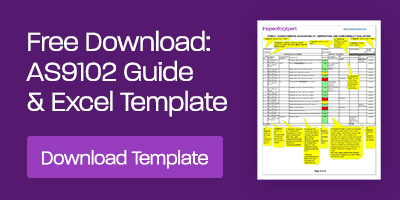This is a guest post by Jason van de Laar, C.E.T. from JTL Integrated Machine, an InspectionXpert customer.
The demand for quality goods just in time and with zero defects is at an all-time high. Many industries rely on manufacturing facilities to prove their manufacturing capabilities with advanced machinery for production. Advanced inspection techniques, like First Article Inspection (FAI), are another important way we can prove out our products and processes. While FAI can be an expensive and labor-intensive process, sometimes it is the only way to achieve success when you are working on a project where the cost of failure is also significant.
It is a good idea to start with thoughtful planning. Get familiar with the drawing, tolerances, specifications, and any other information in the title block, as well as any special notes or other instructions that can be found on sheet 1 of the drawing. Many modern drawings contain critical to quality (CTQ) dimensions which often have very tight tolerances and require specialized inspection techniques and equipment to inspect. This information can save backtracking later while performing the first article inspection and generating the FAI report. Drawing notes are typically on the first page of the drawing and often contain critical information that applies to the entire project, such as testing procedures, painting requirements, and other information that would be too repetitive to call out from within the depths of the drawing, which is why it is spelled out on the cover page so that it will not be overlooked.
Part of performing a successful FAI is tracking everything as you work through the job. Manufacturing and inspection activities must be traceable back to the customers’ requirements in the drawing, specifications, and the purchase order. At my shop, all this information is traceable to our internal job number. Record keeping is important because how you track the customer’s information and the care taken throughout the process can have a significant impact on your reputation as a manufacturing facility. For example, if the customer issues a new drawing revision to your shop and the changes are not properly communicated through your organization, you could make the wrong part to the old revision and the part might not be able to be reworked to the new drawing, which would mean a scrapped part. This is a critical aspect of FAI: when all processes are controlled, they are also stable.

An Inspection and Test Plan (ITP) is an efficient way to organize your FAI plan on one page and gives you an overview of everything that needs to take place in the job from start to end. For an FAI, this document is a valuable tool because it contains all the information mentioned at the beginning of this article:
Example of an Inspection and Test Plan (ITP). Download a free template.
It can be used to list when inspections will take place between operations, who will perform the inspection, which tools will be used and at what frequency.
Accurately inspecting the part requires precision measuring tools.
The tool must also suit the feature being measured to achieve the most accurate measurement possible. There are some situations where using an outside micrometer to measure a round feature is most appropriate. If the tolerance is small enough, a vernier caliper might show the feature is out of tolerance when it is not because the vernier is not as accurate as the micrometer. Sometimes the micrometer may not be able to access hard to reach areas. Knowing what tool to use in each situation is an important skill that is learned over time with experience and practice. Here's a guide to choosing the right precision gage for the job.
The next stage is preparing the FAI dimensional report and performing a 100% dimensional inspection of the part. During this stage, a complete inspection report is prepared which captures all the manufactured features (critical and non-critical) and determines whether the product is acceptable. We use InspectionXpert to balloon our drawings and prepare the inspection reports for our first articles. This gives a clear picture if the part can be accepted or if the manufacturing process needs to be adjusted to produce an acceptable part.
Because this is a comprehensive inspection, the results will indicate if the manufacturing processes used to produce the part are stable. This helps to pinpoint and correct any inconsistencies in the manufacturing equipment or processes. It is crucial to ensure that we capture all the dimensions, especially the CTQs, and ensure that the correct tolerance is being applied. CTQ dimensions should always have their own unique balloon style so that they stand out from the rest and so that the person performing the inspection is able to recognize that these dimensions are special.
Once all the ballooning is completed and all our dimensions are properly captured and verified, we can then begin the inspection process. As we inspect the part, we can enter the measurement results into our previously prepared inspection report.
Once the inspection process is complete, the data must be reviewed and analyzed. Any non-conforming dimensions must be reported to manufacturing and corrected. There should also be discussion about the root causes that led to any issues and what is the corrective plan of action to prevent those non-conformances from occurring again in the future.
FAI is a highly effective inspection method that can be utilized in high risk, high cost situations. It becomes more effective the more it is practiced. It can help protect the customer’s assets and bolster the reputation of the manufacturing shop. I would highly recommend giving it a try on your next big manufacturing project.
Copyright 2025 InspectionXpert Corporation, is a wholly owned subsidiary of Ideagen Inc, All Rights Reserved